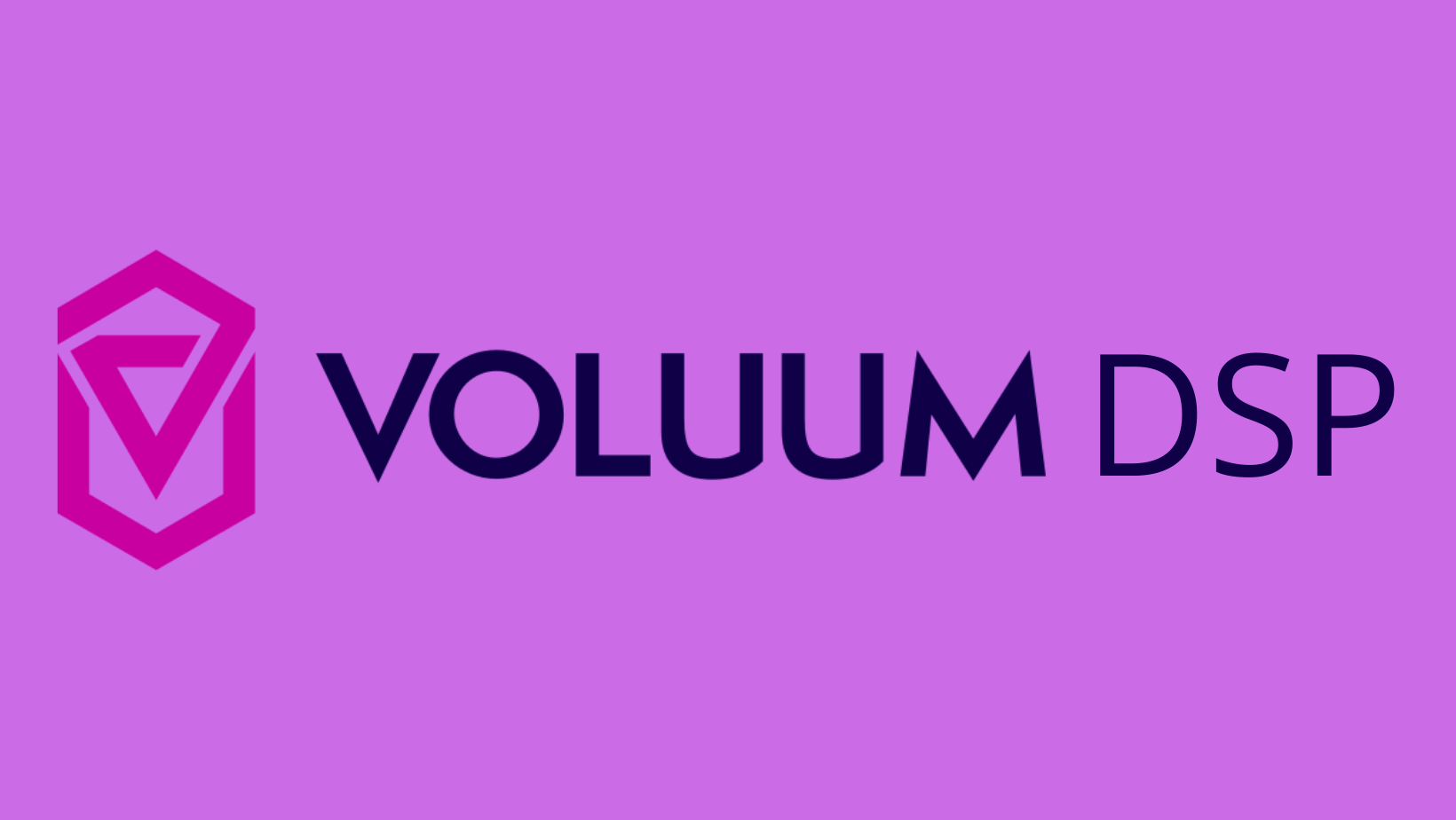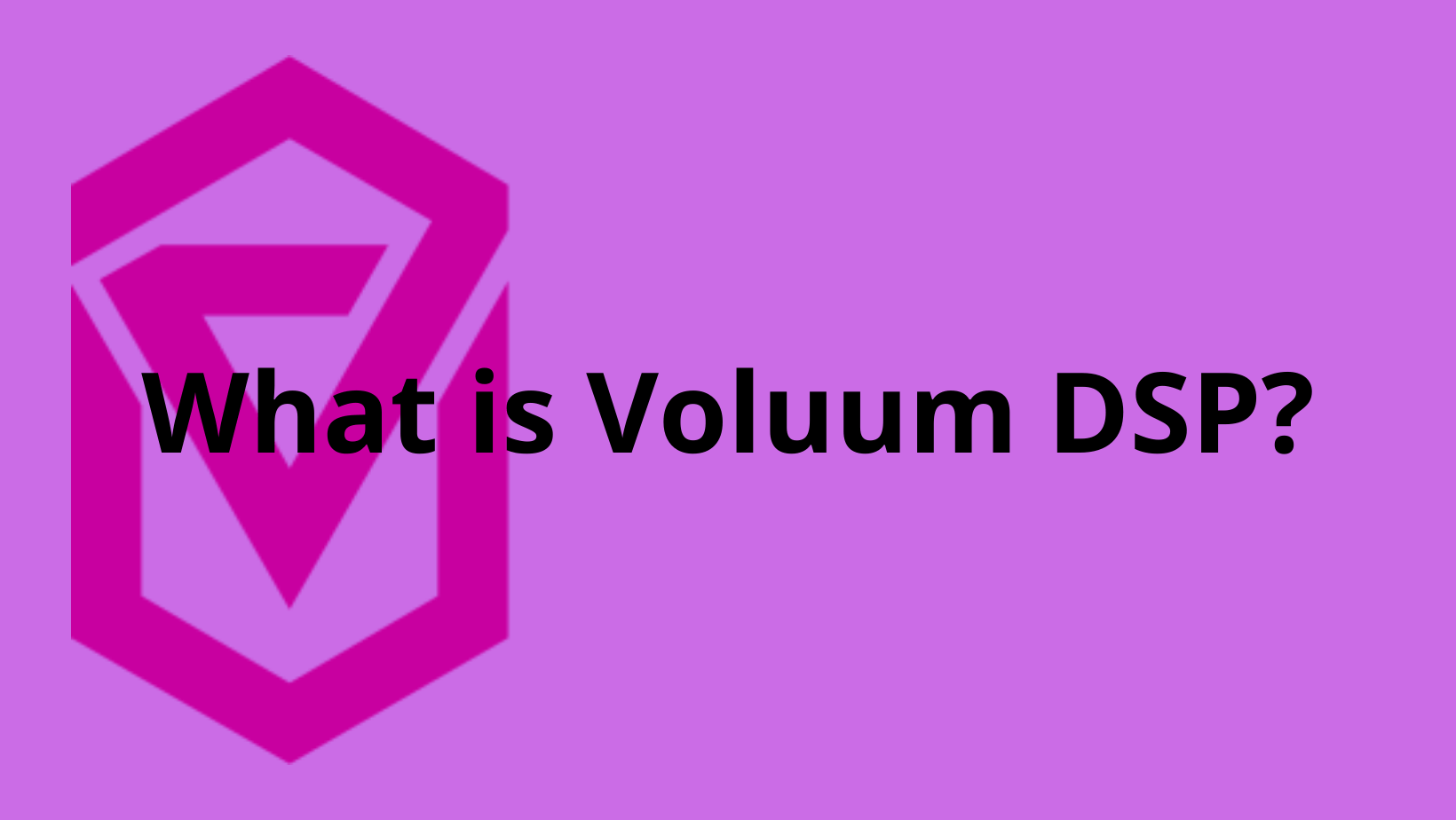
Managing all the small little details when doing affiliate marketing can eat a huge chunk of your available time. This is where automated workflows and managing platforms can help affiliates optimize the only resource they can't get more of, time. For the last couple of years, there has been a massive increase in the usage of DSPs for exactly this reason. And today we will cover what you need to know about them and why you should give Voluum DSP a try!
What Is A DSP?
Demand Side Platforms or DSPS is a type of software that helps advertisers bid on ads. They can be used to bid on mobile, search, video, or any other sort of ads. The tools usually enable advertisers to automate the whole process and optimize it to drive down costs.
With a great DSP, you can buy high-quality traffic at scale with close to no friction. The platform itself can make real-time automated decisions that calculate exactly how much they need to spend on an ad in real-time. All of that without you having to lift a finger.
These programmatic advertising platforms also allow you to buy direct access to specific audience segments based on targeting. This shows that DSPs are truly an evolution of an ad network. These platforms take everything that makes networks great and improves upon them.
Why Are DSPs Important?
DSPs allow you to manage campaigns and advertise across multiple real-time bidding networks. This is in stark contrast to platforms like Google Ads, where you can bid on only one.
Demand Side Platforms enable advertisers to reach publishers easily. They don't have to waste time contacting hundreds of publishers and sending offers. All of this is completely automated and fine-tuned to offer the best performance. Features like this are what make DSPs so useful and popular amongst affiliate marketers.
Marketers can use these software solutions to save time, money, and energy. Instead of doing everything by hand, they can automate most of the time-consuming tasks and leave it to an automated system that probably does a much better job at it anyways.
Finding the right DSP can be a problem as there are many to pick from. One that often stands out from the competition is Voluum DSP. We will cover what Voluum DSP is, why it's so popular, and how you can get started working with it in this article!
What Is Voluum DSP?

Voluum DSP is an easy-to-use programmatic media buying platform that offers tailored traffic. It includes traffic from over 20 Native networks including Outbrain, Taboola, RevContent, and much more.
The key features of it are:
- A simple and feature-rich dashboard
- Impression tracking
- Custom conversion tracking
- Detailed reports on your campaigns
- Direct Pixel tracking
- A/B Testing
- Anti-Fraud checks
- Traffic logs
- Traffic distribution AIs
- Real-time routing APIs
- And much more!
How To Get Started?
1. Add Funds To Your Account
Before starting working with Voluum DSP you need to add some funds to your account. Luckily Voluum makes this easy by providing the options to top off your balance through credit cards, PayPal, or wire transfer easily and within seconds.
The platform itself doesn't store any of your payment info so you can be safe that your financial data is safe as well!
To get started you will have to load up at least $500 plus some fees. After this initial bigger investment, you can top off your account in increments of $200. Maximum payments are dependent on the way you chose to top off your account. If you want to add more than $25,000 to your account, you will need to use a wire transfer.
Currently, Voluum DSP accepts a plethora of currencies, so you shouldn't have issues with that.
2. Traffic Planner
After you top off your account, it's time to start working. The first feature of the Voluum DSP you should utilize is its Traffic planner. This tool allows you to analyze how much traffic is available for any specific targeting criteria you decide. It offers helpful filters and features that can help you pinpoint exactly how much traffic you can expect to form your campaigns.
One of the most important ones is how restricted offers are. These are usually split into 4 restriction groups:
- Low Restricted
These include Automotive, e-Commerce, Gaming, Real estate, and more!
- Medium Restricted
Entertainment, Health, Finance, Tech, and more.
- High Restricted
Dating, Gambling, Beauty, Supplements, Forex, and more.
- Very High Restricted
These include male enhancement, Crypto, Nutra - Cannabis, and more.
You can also filter for specific GEOs, devices, OS, Source Types, and much more. The more detailed your targeting is, the better results you will see. Users can also use the “Discover Traffic” button to see available placements, creatives, GEOs, and valuable information.
Traffic Planner also gives you the power to create whitelists and blacklists for placements. This helps you optimize and remove placements that perform poorly while giving more focus to the well-running ones. Create a habit of using Traffic Planner whenever you want to test a new offer, ad exchange, or GEO. This will help you make sure that whatever you try has better chances to succeed and earn you a pretty penny!
3. Define Your Traffic Flow
Once you have a general idea of what you want to run, it is time to define your traffic flow. When creating your campaign you can direct your traffic towards a Destination URL or towards an LP and offer of your choice. The second option is a bit more usual as it shows better results in most cases, so we are going to cover it.
The first thing you need to do is provide some general information about your flow. This is done by going to the “Flows” menu. There you can add new flows and edit existing ones.
Then you need to add a default path to your flow. This path will direct your audience to a lander and from there to an offer of your choice. This is best done by entering the “Default path” section and creating one there.
While doing this you will have to add a lander and offer that will be used for this purpose. LPs can be accessed through the “Landers” section while offers reside within “Offers”. You will need to provide names, URLs, and additional info for both of them to make everything work fine.
4. Update Your LP’s With Click URLs
The next thing you will need to do is add your click URL to your LP. This link will link your visitors to your offer.
Getting the Click URL is simple. You can go to the Settings within Voluum and click on the “Tracking URL” tab. From there you can simply copy the link and add it to your LP.
Adding it to your page has to be done manually. For this, you will need to open your page’s HTML file inside of a text editor and add the link to it. You will probably need to add some script to the “head” section, and the link itself somewhere within the “body” section of your page. It is simple to do, but it can be a monotone task if you plan to run a bunch of campaigns with different LPs.
5. Create The DSP Campaign
Finally, we have everything we need to make the DSP campaign itself! The first thing you will need to do is go to the “Campaigns” tab inside of Voluum. Create a new campaign and select “DSP Campaign” from the pop-up menu. You can then select Native as your campaign type.
For these campaigns you will have to check six tabs:
- Ad exchange
Here you can access a lot of ad exchange details. You can pick various things like auction types, traffic types, GEOs, sources, and much more. Select your ad exchange options and click “next” to move on to setup!
- Setup
Providing setup information is the next step to making your own DSP campaign. Here you will enter a campaign's name and add tags to it. Then you will have to pick timezones, URL Destination (this is where our previously built flow will be selected), and brand domain.
- Targeting
Targeting is the next thing we have to cover. Here you will have various options to specify and target your ideal audience. You can choose which countries you want to target as well as go more specific by targeting specific regions or cities.
There you can pick source, device, and connection types, as well as specific OS’s.
- Bid & budget

Determining your bids and budgets is next on the list. You can adjust your Max Bid or the biggest value you want to pay for 1000 impressions. Once you pick a value for this, you should get an estimated bid reach provided to you so you can see how much you can get from your bid.
Provide values on your total budget as well. You can pick a maximum amount of $50k, and if you want to go higher, you will need to set the budget to unlimited. But don't do this if you are not certain you know what you are doing in the first place.
There are optional budgeting options like daily limits, spend limits for apps, sites, widgets, and more. These can help you maintain your costs down at a cost of a bit less reach.
- Creatives
Now that the budgeting is done you will need to select the right creatives. You can upload images of varying qualities. Once uploaded, you might need to crop them and select a proper focus point.
Images are not the only things you need for your campaigns. Headlines, descriptions, brand names, icons, CTAs, and much more! The more time you spend making your creatives great, the more success you will probably have.
- Optimization
After creating everything you can adjust some optimization settings. Currently, they are limited to auto-optimizations and pausing through cost capping or time limits.
After you are done with all of this, it is time to click on Save and submit your first campaign for approval!
Conclusion
Voluum DSP is one of the best Demand side platforms available for affiliates right now. It utilizes cutting-edge features that can give you an advantage over campaigns run by your competition. It can help you lower your costs as well as centralize multiple campaigns in one easy-to-track package. Voluum is simple to use and it can help you create some incredible campaigns and run them profitably in no time. All that you need to do is get started!
Have you ever used the Voluum DSP? What is your experience with it? Share your experience with us in the comments below!
Please log in to Facebook to access the comments section